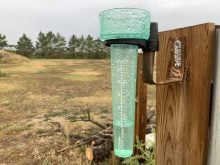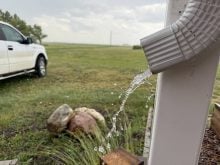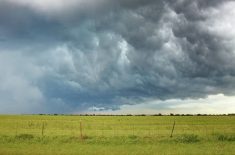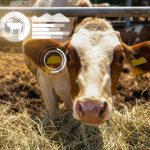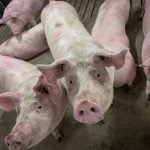Alberta cattle producers need better business risk management (BRM) programs and they need them yesterday, says the chair of Alberta Beef Producers.

“I believe we are in a crisis,” said Brodie Haugan from his ranch about 80 kilometres south of Medicine Hat.
“We’ve seen the compounding effects of drought and severe weather. We’ve seen many counties declare states of disaster.
“We continue to hear of a lot of cattle going into town, a lot of pairs going into town. Producers have had to make that decision of how they’re going to get through the winter with the inventory that they have or the feed inventory that they have on hand.”
Read Also
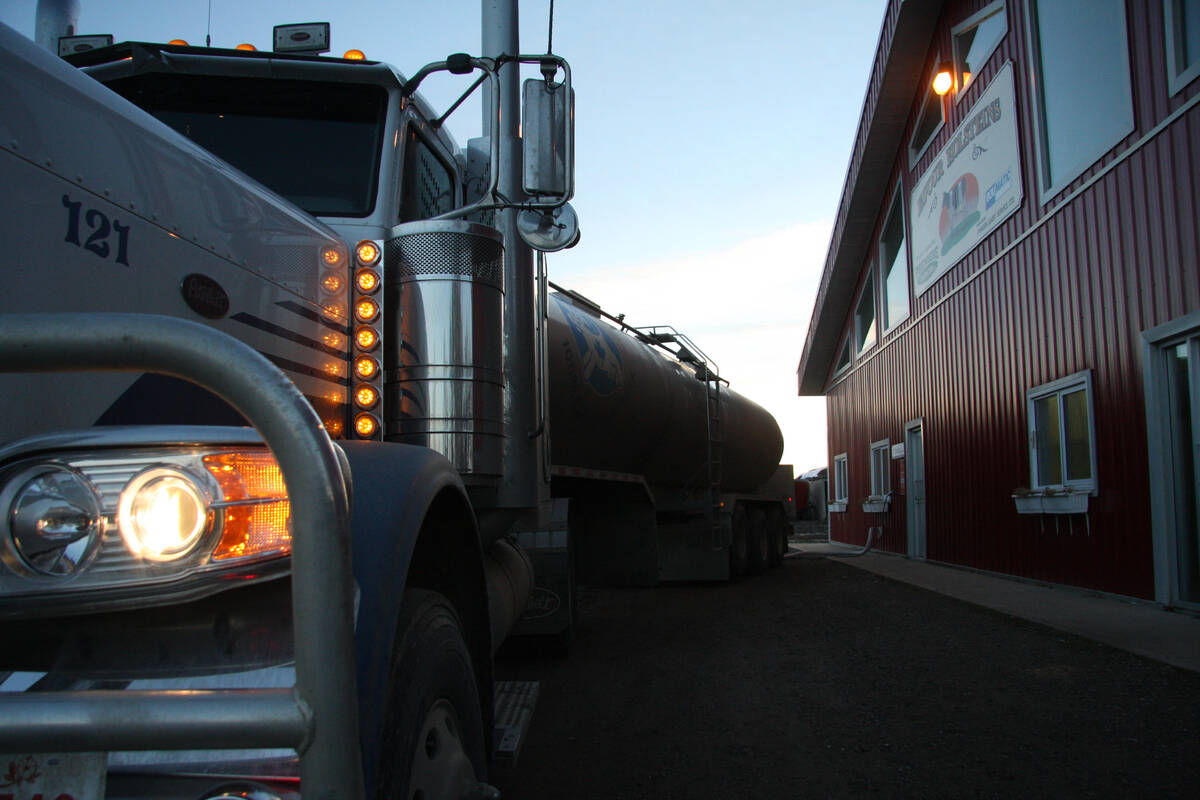
Milk transportation requires intricate logistics
Alberta Milk explains transportation system in Western Canada which sees millions of litres cross borders
What the industry needs, said Haugan, is a program — preferably based on the federal-provincial-territorial AgriRecovery disaster-focused framework — to help producers recover before they have to make any more tough business decisions.
”It’s frustrating,” he said.
“We’re doing everything we can to communicate the need for an AgriRecovery or at least honest consideration for one. And the longer we wait, the more difficult it becomes for producers to make the necessary decisions required to keep their operations moving forward.”
Government negotiations
AgriRecovery is one of a handful of BRM tools offered under the Sustainable Canadian Agricultural Partnership (S-CAP) and delivered in Alberta by AFSC. It’s intended to help producers recover “extraordinary costs” beyond what is available through other S-CAP programs such as AgriStability and AgriInsurance. But it must be triggered by government, rather than a pre-determined trigger like other risk management programs.
Reports this fall indicated that federal and provincial governments were locked in negotiations over a possible AgriRecovery solution.
Although Alberta Agriculture minister RJ Sigurdson released an open letter August 21 reiterating the severity of the province’s beef sector woes, word from Ottawa has been in short supply.
In his letter, Sigurdson suggested what an AgriRecovery program for the Alberta beef sector might look like.
“For example, extraordinary costs may include feed and transportation costs related to hauling feed or animals,” he wrote.
The biggest reason Haugan is hoping for an AgriRecovery solution is because it stands the best chance of protecting Canada’s cow herd — of which Alberta makes up a significant number — in the face of producers leaving the industry.
“The reason why we’re hoping it triggers is to try to offset some of those unforeseen costs of severe weather events that have happened this year and try to hopefully convince some producers to keep a few more of their cows around,” he said.
The beef industry has historically found it hard to find BRM tools that suit the sector. Instead, government programs have often leaned towards a “one size fits the entire ag sector” approach, said Haugan.
In the process, the unique economic and logistical factors of the beef industry can get lost in the shuffle.
Changes needed
One S-CAP program that could be better tailored for the beef industry with a few changes is AgriStability, he said.
According to AFSC, this is a management tool that offers protection against large declines that threaten the viability of a farm and are beyond producers’ capacity to manage.
The program considers proceeds from agricultural commodity sales and production insurance to be allowable income. Allowable expenses include commodity purchases, as well as direct input costs incurred in the farming operation.
“There have been some very obvious holes identified with AgriStability, specifically around cow-calf production,” said Haugan.
But cow-calf operations aren’t high cash flow businesses. For example they produce most of their feed on the farm, never intending to sell it — which makes a shortfall hard to quantify and put a price on.
Haugan also noted that cow-calf operations tend to rely less on hired help, again making it a poor fit for AgriStability.
“A big part of how the program works is how you calculate the cost of your labour, which a lot of times isn’t actually paid labour — it’s family labour,” Haughan said.
Haugan hopes any program the government brings forward will be wide-ranging enough to accommodate the unique needs of not just the beef industry, but individual producers.
“We hope that the rules and the ability to apply are wide enough and broad enough so that it doesn’t take too many people out of the program unnecessarily. Our concern is that if it gets too specific, more people may fall out than fall in,” he said.
“If your operation had to make a substantial management change in order to mitigate the drought for this season this year, we’re hopeful that it’s reflected within a program.”
Located in the southeast corner of Alberta, Haugan ranches in a region of the province that has been hit hard by drought for several years. The losses are adding up, he said.
“We’re in our fourth year of drought. We were forced to take some pretty serious, drastic management changes last year. We sold off 100 cows. We changed some of our grazing rotations. We didn’t keep our bred heifers at home — we left them in a feedlot for the summer.
“And if we didn’t do that last year, we wouldn’t have been able to get through this year. This year we haven’t built back our inventory at all. And that’s the only reason we’ve been able to get through this year.”
Better situated

Meanwhile, representatives of Alberta Canola Producers and Alberta Grains (formerly Alberta Wheat and Barley) say the majority of their memberships have been able to get by with crop insurance.
Ian Chitwood — vice-chair of Alberta Canola — said most canola producers in the province don’t see the need for an AgriRecovery solution for their operations.
“Despite the fact that we do have widespread drought and it’s in pretty much the whole southern half of Alberta, it’s not an exceptional circumstance like the beef sector is facing,” he said.
“I think that the broad consensus is that crop insurance will be suitable to meet the the demand and meet the losses.”

Shannon Sereda, director of government relations, policy and markets for Alberta Grains, said most grain growers are using AFSC’s crop insurance program.
Although Alberta Grains will work with government to trigger an AgriRecovery solution if necessary, she said a lot of things have to occur before that happens.
“There’s a number of different criteria. One is whether existing programs can cover the loss,” said Sereda.
“Another is if there’s extraordinary costs that wouldn’t occur under normal circumstances that they need support for to offset the impacts of a disaster.
“Lastly, (the disaster) has to be widespread across a specific region.”
The ongoing challenge with crop insurance, she said, is that multiple-year use of the program creates more risk that subscribers ultimately pay for.
“If we look back to 2021 and now again in 2023, we’ve had some significant production losses due to the drought conditions. So it does start to really impact (producers’) premiums and their premium calculations,” said Sereda.
“So that’s something we’re also keeping our eye on because crop insurance is already a very kind of expensive part of our farmers’ operations.”




